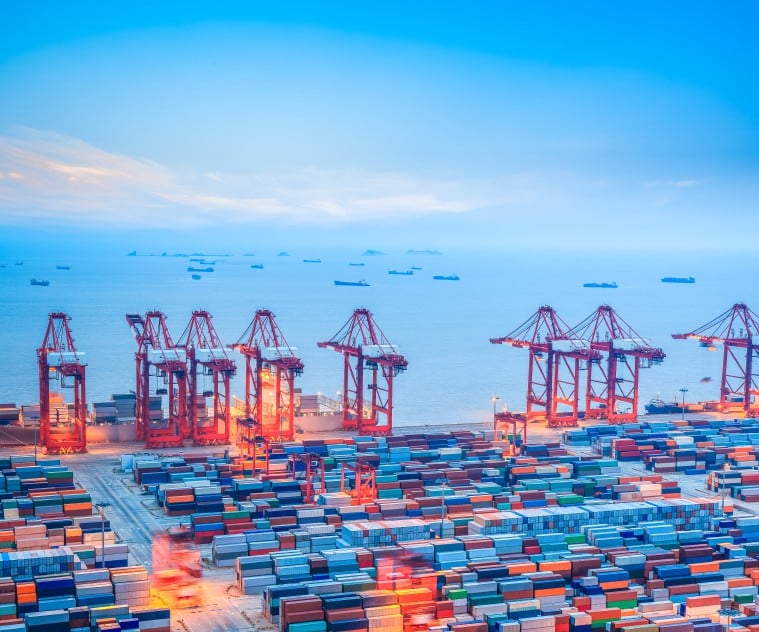Due to the complexity of the supply chain, it becomes important to have the security measures, procedures and protocols in place to maximize cargo security. It will have great benefits not only to importers but also to the importing country as a whole. Importers buy cargo from the other end of the world, sometimes without seeing who the actual factory is. There may be a war going on or some natural disaster might have hit the country of importation. A lot of factors effect the cargo security, of course not all of them are controllable but by following a few steps, importers can take control of the security of their cargo and minimize the risks which might be costly in the end.
During my career here at MTS Logistics, Inc I have dealt with many different scenorios that I could never imagined could happen to any importer. From radioactive nails on the seal to untreated pallets I have realized that it is actually the same problem that’s happening over and over again to importers, and since these containers are being rejected by US Customs many of the incidents result in the return of the whole container back to its origin, which is only one of many possible outcomes. In the end it is the importer who suffers due to loss in sales, unmatched due dates and loss of image. Depending on the frequency of these issues and the size of the importer, it might have negative impacts on the overall well being of the company. You are an importer and you are buying goods from the other end of the world and you would like to know what more you can do to secure the well being of your cargo but don’t know how to? I have listed a few major steps that need to be taken to maximize the security of your cargo. From complex precautions to more basic ones, here is what I think that every importer must do:
1. C-TPAT membership:
It goes without saying that C-TPAT( Customs Trade Partnership Against Terrorism) is the biggest step that an importer can take to ensure the security of their cargo. C-TPAT emerged from the 9/11 attacks and was launced on November 2001 with 7 companies and today there are more than 10000 companies are member of CTPAT. Since the beginning it is voluntarary to be a CTPAT member. CTPAT members work with US Customs to protect their supply chain from concealment of terrorist weapons in exchange CTPAT provides reduced inspection at arrival ports, expedited processing of cargo, front of line inspection and some other benefits as penalty mitigation (cbp.gov). In 2005 Customs and Border Protection (CBP) moved to 3 tiered benefit structure. Tier 1 importers receive less cargo examinations for security concerns, eligible for fast cargo processing, front of line inspection priviliges should there be an inspection and penalty mitigation. Tier 2 importers have all the benefits as tier 1 importers plus much less cargo inspection due to security concerns. Tier 3 importers are the precursor of CBP’s green lane which will allow importers zero customs inspections other than occasional random inspections. For CTPAT membership there are steps that need to be taken but anyone can apply to be a member. For info please visit CBP.com
2. Travel overseas:
Although seeing the supplier’s premises will not 100% help you receive your cargo securely, it will definitely have benefits. Does your supplier have gates? Do they have camera system? Do they have procedures in place to handle the cargo? Especially if the cargo is loaded at the supplier’s premises, making sure they have a system in place will definitely have a positive impact on receiving your cargo securely.
3. Container seal:
Make sure you have a system in place to ensure that the seal numbers are checked once the container is received at your warehouse. The seal number must match the one that was provided to you by your supplier If there is a mismatch or if you see that the seal has been tampered with, and there was no customs examination performed on your container – immediately notify your freight forwarder and customs broker for further action.
4. Necessary customs filings:
AMS and ISF filings must be done properly and on time. As an importer, if you are handling your own ISF , make sure it is filed 24 hours before the cargo is loaded from the transshipment port if there is one and if it is direct call before the vessel’s departure from the port of origin. Non compliance with the ISF will result in increased cargo inspections at the port of arrivals and persistence with the non filings might result in monetary penalties and other penalties.
5. Understanding the requirements of the US Customs:
Follow the industry news. When there is a major change, US Customs publish publications and newsletters. Work with your customs broker and freight forwarder to be on top of the changes and apply them to your company.
Surely, there will always be unprecedented, unexpected and unforeseeable incidents from time to time. But implementing of any of the above steps will help increase your cargo’s security. Is it guaranteed that you will have no issues even if you have all of the above implemented? The answer is NO but it is guaranteed that you will be in a much better state and place than those who do not take any action. Don’t forget, out of the number of shipments you are bringing in, one shipment with problems might cause you a lot of damage. So act now.





